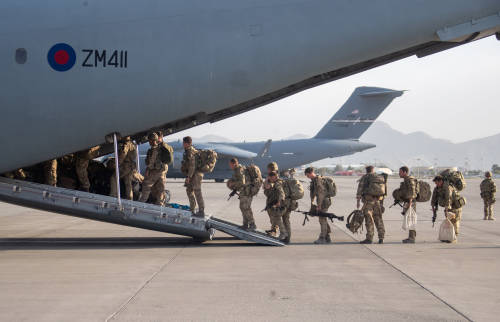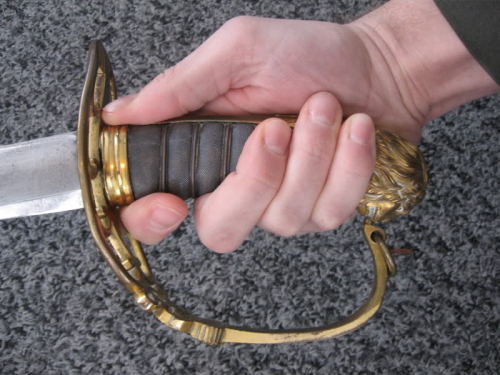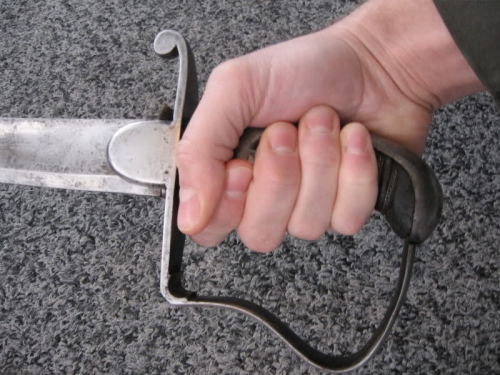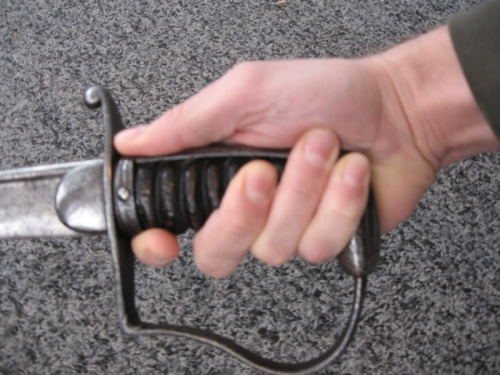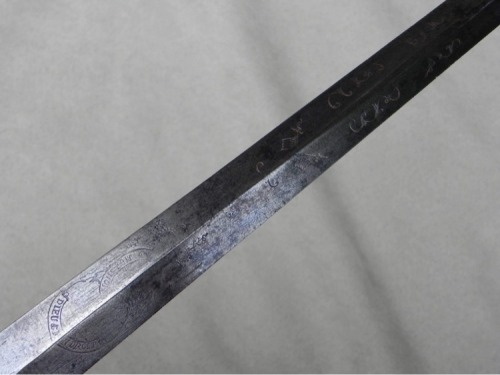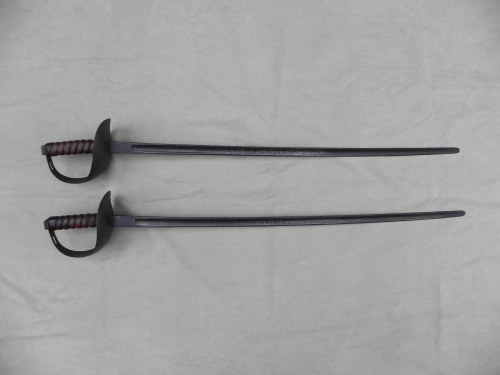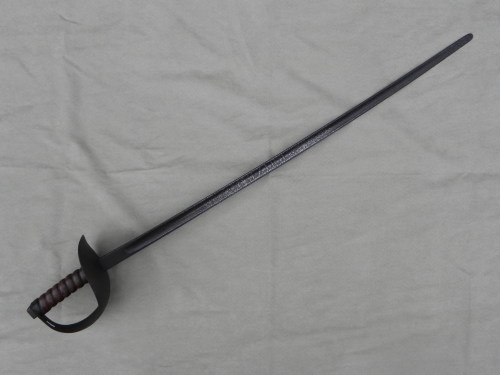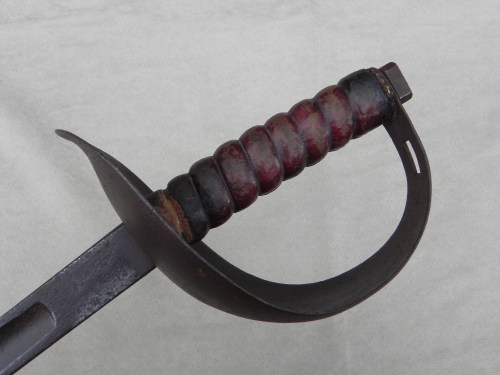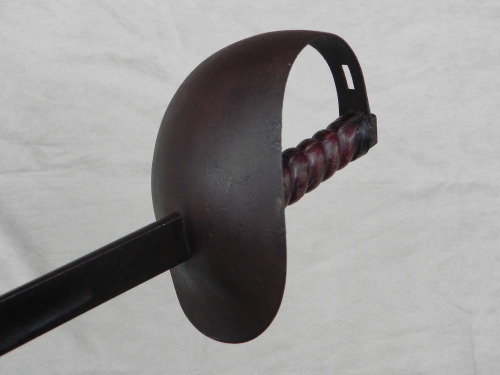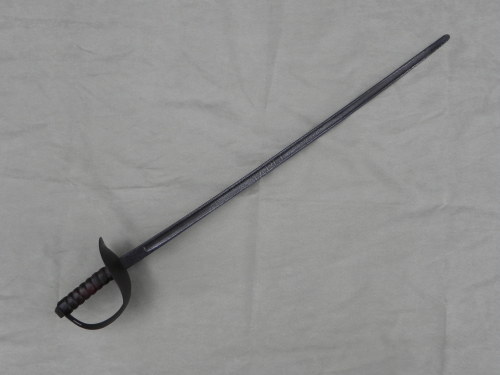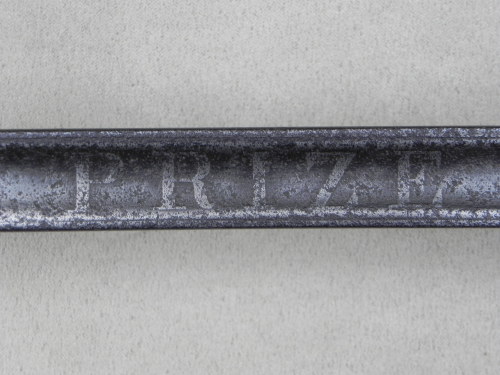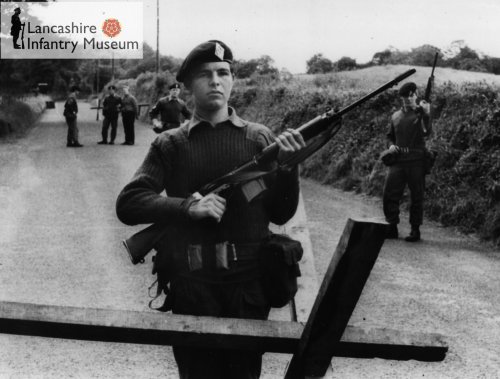#british army
1945, Gunner Hector Murdoch had been gone over four years, most of it as a prisoner of war in Singapore.
His wife Rosina and son John hadn’t known if he was dead or alive.
He got home on his birthday.
Post link
2315 hrs Saturday 29th Aug 2021: The final flight carrying UK Armed Forces personnel has left Kabul.
Post link
“Battle of Albert. British troops attacking German trenches near Mametz. 1st July 1916.”
Source: Imperial War Museum.
Post link
British Officers’ Swords c.1800-20
There was some interest in my tulwar post to see a comparison of grip sizes and to see a hand actually holding the swords for a sense of scale. Here are some photos I took way back in 2010 (apologies for the terrible background and lower image quality). I’m not sure what I was trying to achieve when I took these, but they do demonstrate how one could hold the swords, I suppose. They are, in order from top to bottom:
- British Pattern 1803 Infantry Officer’s Sword
- British Pattern 1796 Light Cavalry Officer’s Sword
- British Pattern 1796-style Officer’s Sword (with pipe-back blade)
Post link
British Officer’s Sword c.1800
This sword is very similar to the Pattern 1796 Heavy Cavalry Officer’s Dress Sword, and it could actually be one. However, I think it might be an infantry officer’s sword, and may pre-date the 1796 regulations. The main departure from most 1796 HC Dress Swords is the manner in which the knucklebow attaches to the pommel. The 1796 HCD’s knucklebow attached with a screw, whereas my example slots into a jolt in the pommel. Additionally, the boat shell guard is asymmetrical.
The blade is of diamond cross-section and has some weight to it–not a light small-sword blade–and is probably a bit better at thrusting than the standard P1796 Infantry Officer’s Sword blade.
It is far from being in top condition, but its unique features have made it an interesting sword to study and own.
Measurements
Weight: 1 lb. 9 ½ oz.; Blade Length: 31 1/2″; Overall Length: 38 1/4″; PoB: ~3 1/4″
Post link
British Pattern 1864 Practice Swords / Gymnasium Sabres
Both made by Wilkinson and etched “Royal Military College / Prize / June 1870”.
According to Matt Easton, “The 1864 pattern was the regulation British Army fencing sabre in use during most of the second half of Queen Victoria’s reign, officially until 1895, and it was the regulation practice sword in use during the time of the manuals by Burton, Hutton, Waite and others.”
Please check out his excellent article here.
Sword 1
Weight 1 lb. 12.5 oz., blade length 32.5", blade width at ricasso 1", blade thickness at ricasso ~0.25", grip length ~5.5", PoB ~4".
Sword 2
Weight 1 lb. 11.5 oz., blade length 32.5", blade width at ricasso 1", blade thickness at ricasso~0.25", grip length ~5.5", PoB ~4".
Post link
A SWORD that met Queen Victoria
The antique sword which was made for George Thomas Conolly Napier, who after an eventful military career became ADC to Queen Victoria.
Victorian Army Officer’s Tent
A look inside an Army Officer’s tent or quarters of the 2nd half of the 19th century and the campaign furniture and accessories he would have had to make his life easier. We then look at all his equipment packed up ready for travel.
British pattern 1905 Staff Sergeant’s Sword






1776: A British Lieutenant of His Majesty’s 17th Regiment of Foot (later the Leicestershire Regiment).
James Martin - a member of Redcoats and Revolutionaries - is currently working on his ‘mkII’ version of his officers kit.
Photos by Alan Ball and Nick Dunning.
Scottish infantry of the Earl of Orkney’s Royal Regiment advance at the battle of Malplaquet, 11 September 1709. By Graham Turner.
Post link






The 33rd looking fine as ever.
Soldiers from the 1st battalion, Queen’s Lancashire Regiment, manning a VCP (Vehicle Check Point) near Enniskillen, Northern Ireland, in August 1970.
Post link

22nd MAY 1996. The Queen presented new Colours to the 1st Battalion Royal Welsh Fusiliers at Beachley Barracks, Chepstow.


